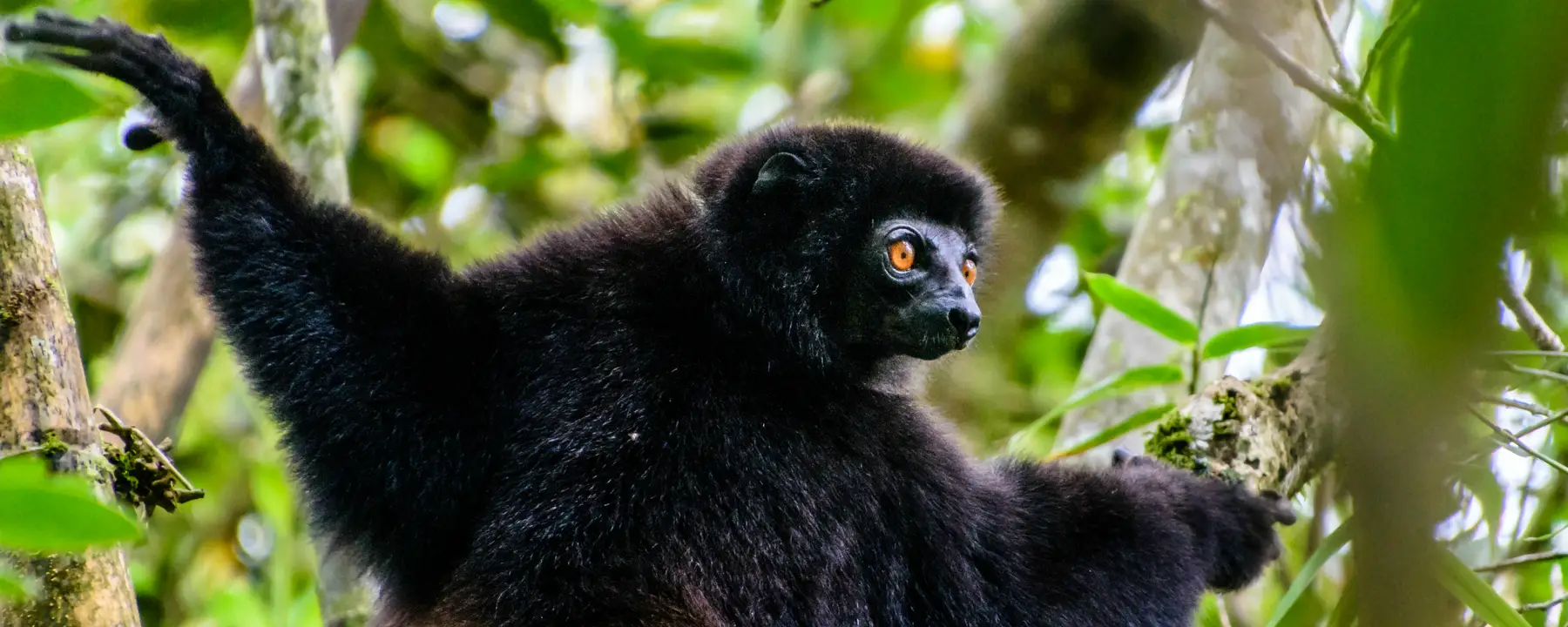Learning what the gut microbiome can tell us about diet and disease
All vertebrate animals—from fish to reptiles to human beings—harbor trillions of microorganisms in their guts, which aid in the digestion of food. These bacteria and protozoans often find their way into solid waste, meaning that analysis of fecal samples can yield insights not only into the host animal’s microbiome, but what kind of food that individual has been eating and what other members of its community it has recently been interacting with.
We have been applying metagenomics—the analysis of the genetics of microorganisms recovered from fecal matter—to various lemur populations living on the island nation of Madagascar. Our metagenomic data provides valuable insight into the day-to-day lives of these primates, and the subtle differences in diet and overall health among individuals and lemur social groups.
How does the detailed study of lemur droppings fit in with RTI’s mission of improving the human condition? Part of the reason we self-funded this study was to gain field and laboratory experience in metagenomics, which we are now applying to human populations. For example, our SSM-Capable project involves metagenomic analysis of women with fecal incontinence, to determine if this condition has any link to the individual’s microbiome; this technique can also be applied to human fecal transplants.
Harvesting Metagenomic Data from Lemur Fecal Samples
Our study in Madagascar was premised on two simple questions. First, if you came across a previously unidentified lemur that joined a larger community, how much could you tell about it from a metagenomic analysis of its fecal samples, as opposed to closely tracking that lemur and observing its behavior in the wild for six months? And second, can the analysis of fecal samples from the same lemur over an extended course of time shed any light on changes in that individual’s health and behavior?
The lemur species we chose to study—the wild sifaka, Propithecus edwardsi—shows distinctive behavior in its home territory of Ranomafana National Park in southeastern Madagascar. These lemurs live in female-led social groups of three to nine individuals, with overlapping boundaries, and these groups are generally stable over time, with new individuals occasionally taking the place of members that wander off, are kicked out, or die of old age or disease.
Lemurs defecate as they become active in the mornings; our team (consisting of local residents and graduate students) harvested stools by holding collecting plates under trees. Between June and August 2016, we gathered fecal samples from 23 individuals in three separate lemur groups, which were then sent for analysis to the Microbiome Core Facility at the University of North Carolina-Chapel Hill. In the lab, we were able to identify about six million microorganism DNA fragments for each fecal sample, corresponding to thousands of bacteria and protozoa species—a huge amount of data considering that there were fewer than two dozen lemurs involved.
Inferring Lemur Diets from Lemur Gut Microbiomes
Our metagenomic analysis of lemur fecal samples produced some interesting results. The three different lemur social groups we studied had marked differences in gut microbiomes:
- The Talatakely group showed possible increases in the bacterium Prevotella ruminocosa, indicating a higher-protein diet
- The Valohaka group showed possible increases in other species of Prevotella indicative of a high-carbohydrate diet
- The Vopiparara group showed possible increases in the Plasmodium parasite that causes malaria, as well as the bacterium Eggerthela lenta, which is pathogenic in ulcerative colitis and anal abscesses
We expected to find gut microbiome differences among lemur social groups, but we were surprised by another piece of metagenomic data obtained in the lab. We discovered a difference between male and female lemur microbiota that cut across all three social groups: male lemurs showed higher levels of Actinobacteria, Deltaproteobacteria and Clostridiales, the exact combination of bacteria implicated in a high-fat diet. Clearly, male lemurs enjoy slightly different diets than female lemurs—exactly the kind of unexpected finding that makes the metagenomics of gut microbiota such a fascinating field of study.
- RTI-funded

